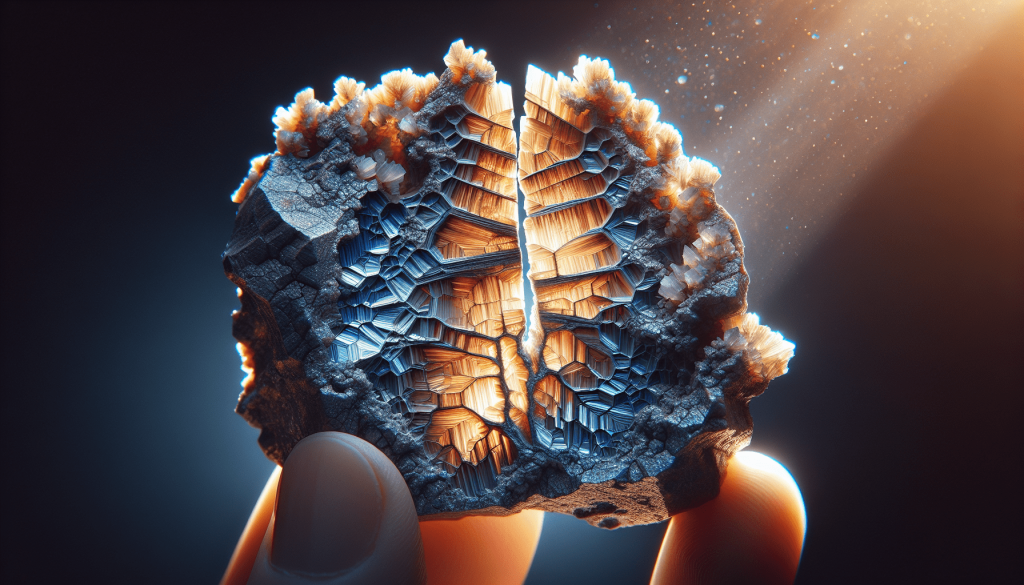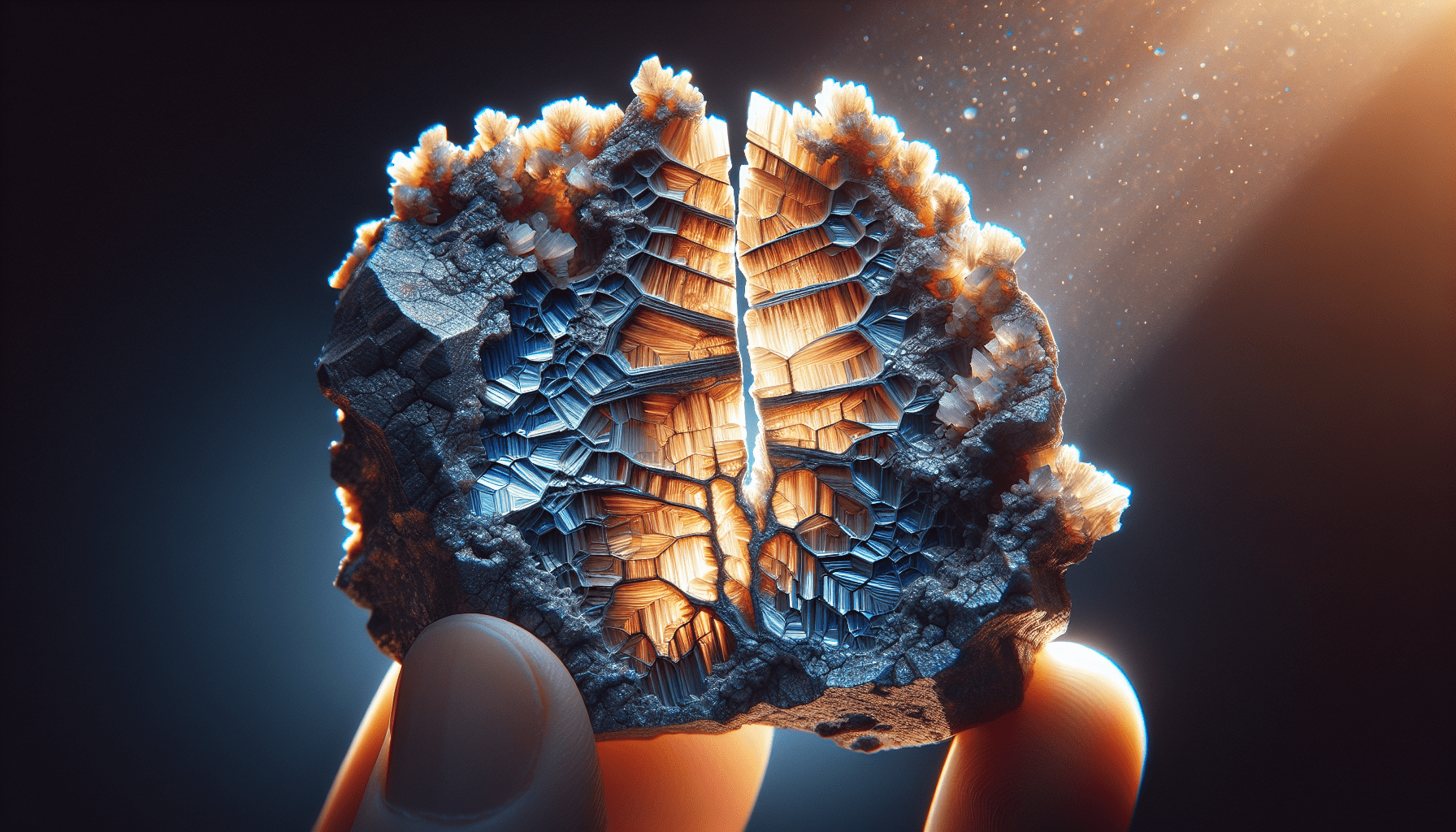The Impact Of Cleavage And Fracture On Mineral Chemical Properties
When it comes to studying minerals, the focus is often on their chemical properties. However, did you know that the physical characteristics of minerals, such as cleavage and fracture, can also have a significant impact on their chemical properties? Cleavage refers to the way a mineral breaks along planes of weakness, while fracture refers to the way it breaks irregularly. In this article, we will explore how these two characteristics can influence the chemical composition and behavior of minerals, shedding light on a fascinating aspect of mineralogy that is often overlooked.
Introduction to Cleavage and Fracture
Cleavage and fracture are important concepts in mineralogy that play a significant role in understanding the chemical properties of minerals. These characteristics describe how minerals break or split along specific planes or irregular surfaces. By examining cleavage and fracture, mineralogists can gather valuable information about a mineral’s crystal structure, composition, and stability. This article will delve into the definitions, causes, mechanisms, and effects of cleavage and fracture, as well as discuss their significance in mineral identification, stability, and various applications.
Cleavage and Its Effects on Mineral Chemical Properties
Definition and Characteristics of Cleavage
Cleavage refers to the way in which a mineral breaks along distinct planes of weakness. These planes are determined by the arrangement of atoms within the mineral’s crystal lattice. Cleavage can be categorized into different types, such as basal, cubic, octahedral, prismatic, and rhombohedral, depending on the number and orientation of the planes. Each type of cleavage has unique characteristics, such as the number of cleavage directions and their angles of separation. For example, mica minerals exhibit perfect basal cleavage, where they split into thin, flexible sheets due to the weak bonds between individual layers.
Causes and Formation of Cleavage
Cleavage is primarily influenced by the arrangement of atoms or ions within a mineral’s crystal lattice. It occurs along planes of weaker atomic bonding, which are determined by the crystallographic structure of the mineral. Factors such as the symmetry of the crystal, the strength of atomic bonding, and the presence of crystal defects can affect the development and quality of cleavage. The symmetry of the crystal lattice determines the number and orientation of cleavage planes, while weaker bonding along these planes makes them susceptible to cleavage.
The Role of Cleavage in Mineral Identification
Cleavage plays a crucial role in the identification of minerals. The presence and characteristics of cleavage can provide valuable diagnostic information about a mineral’s identity. For example, the number, angle, and quality of cleavage planes can help differentiate between similar minerals. Cleavage can also assist in distinguishing minerals from non-mineral substances. By examining how a mineral breaks, mineralogists can make educated guesses about its internal crystal structure and chemical composition.
Effects of Cleavage on Mineral Chemical Properties
Cleavage has significant effects on the chemical properties of minerals. The presence of cleavage planes can expose different crystal faces, which may have distinct reactivity or surface energy. This can result in variations in the mineral’s stability, weathering, and chemical reactivity. Cleavage can also influence the dissolution rate of minerals and the accessibility of reactive sites on crystal surfaces. In some cases, cleavage can expose vulnerable areas that are easily weathered or dissolved, altering the mineral’s overall chemical composition over time.

Fracture and Its Effects on Mineral Chemical Properties
Definition and Characteristics of Fracture
Fracture is another way in which minerals break, but unlike cleavage, fracture does not occur along specific planes. Instead, fracture refers to the breaking of a mineral along irregular surfaces, resulting in rough, uneven, or jagged edges. Fracture can be categorized into different types based on the texture of the broken surface, such as conchoidal, even, splintery, fibrous, or hackly. Each type of fracture provides unique characteristics that can aid in mineral identification and provide insights into the mineral’s physical properties and internal structure.
Causes and Formation of Fracture
Fracture occurs when a mineral exceeds its elastic limit and undergoes brittle failure. It can be caused by various factors, including external stresses, changes in temperature or pressure, or internal defects within the crystal lattice. When the applied stress on a mineral exceeds its strength, bonds between atoms or ions can break, resulting in fracture. The specific type of fracture that occurs depends on the mineral’s composition, crystal structure, and the nature and direction of the applied force.
Differences Between Cleavage and Fracture
The key difference between cleavage and fracture lies in the manner in which the minerals break. Cleavage occurs along specific planes of weakness, resulting in smooth, flat surfaces, whereas fracture occurs along irregular surfaces, resulting in rough, jagged edges. Cleavage is a more controlled type of break that follows the crystallographic structure, while fracture is a more random break induced by factors such as stress or defects. Cleavage planes are defined by the crystal structure, whereas fracture surfaces reflect the nature of the applied force.
The Role of Fracture in Mineral Identification
Fracture can provide valuable information for mineral identification, especially when cleavage is absent or difficult to observe. The type and texture of fracture surfaces can be distinctive for certain minerals, aiding in their identification. For example, minerals with conchoidal fracture, characterized by smooth, curved surfaces resembling broken glass, are often associated with quartz. Fracture patterns can also provide insights into the brittleness or toughness of a mineral, which can be indicative of its physical properties and potential uses.
Effects of Fracture on Mineral Chemical Properties
Fracture can impact the chemical properties of minerals in various ways. The irregular surfaces created by fracture can provide increased surface area for chemical reactions, which may enhance the mineral’s reactivity. Fracture can also expose previously inaccessible crystal faces or reactive sites, leading to changes in the mineral’s dissolution rate or susceptibility to weathering. In some cases, fractured minerals may undergo chemical alteration or rearrangement of atoms along the newly formed surfaces, affecting their overall chemical composition and stability.
Mechanisms of Cleavage and Fracture
Crystallographic Planes and Cleavage
Cleavage is closely related to the crystal structure of minerals. Different crystallographic planes exhibit varying strengths of atomic bonding, which determines the propensity for cleavage. Cleavage planes correspond to planes of weaker interatomic forces, allowing for the separation of crystal layers. The quality and ease of cleavage depend on the crystal symmetry and the extent of atomic bonding along the cleavage planes. The angles and smoothness of cleavage surfaces can provide clues to the internal arrangement of atoms within a mineral’s crystal lattice.
Brittle and Ductile Fracture
Fracture can be classified into brittle and ductile fracture, depending on the behavior of a mineral when subjected to stress. Brittle fracture occurs when a mineral breaks with little or no plastic deformation, often resulting in sharp-edged fragments. It is characterized by sudden, catastrophic failure due to the propagation of cracks through the mineral. In contrast, ductile fracture involves plastic deformation and occurs when a mineral undergoes gradual strain before breaking. Ductile fracture is often associated with minerals that exhibit plasticity or can be deformed under high temperatures or pressures.
External Forces Impacting Cleavage and Fracture
Both cleavage and fracture can be influenced by external forces acting on minerals. Stress, pressure, temperature changes, or impacts can induce or modify cleavage and fracture patterns. Increasing stress or pressure can lead to the propagation of cracks and the separation of atomic layers along cleavage planes. Similarly, changes in temperature or pressure can cause expansion or contraction, resulting in fractures along weaker points within the mineral. Understanding the effect of external forces on these properties is crucial in predicting the behavior and durability of minerals under various conditions.

Influence of Cleavage and Fracture on Mineral Stability
How Cleavage and Fracture Affect Mineral Stability
Cleavage and fracture can significantly impact the stability of minerals. Cleavage planes often expose crystal faces to the surrounding environment, making them susceptible to physical and chemical weathering. These exposed surfaces increase the mineral’s surface energy, leading to a higher reactivity with external agents such as water, air, or solvents. Fracture, on the other hand, can create additional surface area for reactions, making fractured minerals more prone to chemical alteration and dissolution. The stability of minerals can be influenced by the size, orientation, and quality of cleavage planes, as well as the nature and extent of fractures within the crystal structure.
Chemical Reactions and Changes Caused by Cleavage and Fracture
Cleavage and fracture can trigger chemical reactions and changes within minerals. Exposed cleavage planes or fractured surfaces may react with atmospheric gases, water, or other solvents, leading to the formation of secondary minerals, dissolution, or alteration of the parent mineral. Chemical reactions on cleavage planes can result in the formation of new crystal faces, growth of secondary minerals, or selective removal of specific elements. Fractured surfaces can provide reactive sites for adsorption, precipitation, or catalytic reactions. These chemical reactions can affect the mineral’s physical appearance, stability, and overall composition.
Applications and Importance of Studying Cleavage and Fracture
Understanding Geological Processes
Studying cleavage and fracture is essential for understanding geological processes and the formation of minerals. Cleavage can provide insights into the conditions under which minerals formed, the stress and pressure they experienced during their growth, and the subsequent deformation they underwent. Fracture patterns can reveal information about tectonic activity, seismic events, or the impact history of a region. By examining cleavage and fracture in minerals, geologists can reconstruct past geological events and unravel the complex geological history of a particular area.
Influence on Mineral Exploration and Mining
Cleavage and fracture characteristics are valuable tools in mineral exploration and mining. Cleavage planes can act as pathways for fluid movement, impacting the formation and concentration of economically valuable minerals. Understanding the orientation and quality of cleavage can aid in determining the feasibility of mining operations, as well as optimize drilling and extraction techniques. Fracture patterns can indicate the presence of fault zones, mineralization zones, or fracture-controlled ore deposits. By considering the cleavage and fracture properties of minerals in an area, geologists can make informed decisions regarding mineral resource potential and extraction strategies.
Implications for Materials Engineering
The study of cleavage and fracture has implications for the field of materials engineering. Cleavage planes can influence the mechanical behavior and strength of materials, as they act as preferential paths for crack propagation. By understanding the cleavage properties of materials, engineers can design structures and materials with enhanced strength and fracture resistance. Fracture patterns and mechanisms provide insights into the brittleness, ductility, and toughness of materials, allowing engineers to select suitable materials for specific applications. Knowledge of cleavage and fracture can contribute to the development of more durable and reliable materials in industries such as construction, aerospace, and automotive engineering.
In conclusion, cleavage and fracture are important aspects of mineralogy that provide valuable information about mineral chemical properties, identification, stability, and applications. Cleavage occurs along specific planes of weakness, while fracture refers to the breaking of a mineral along irregular surfaces. Understanding the causes, mechanisms, and effects of cleavage and fracture allows mineralogists to interpret the behavior and properties of minerals in various geological settings. It also provides insight into the physical and chemical processes that shape the Earth’s crust and has practical implications in mineral exploration, mining, and materials engineering. By studying cleavage and fracture, researchers can unlock the secrets held within minerals and further our understanding of the natural world.







